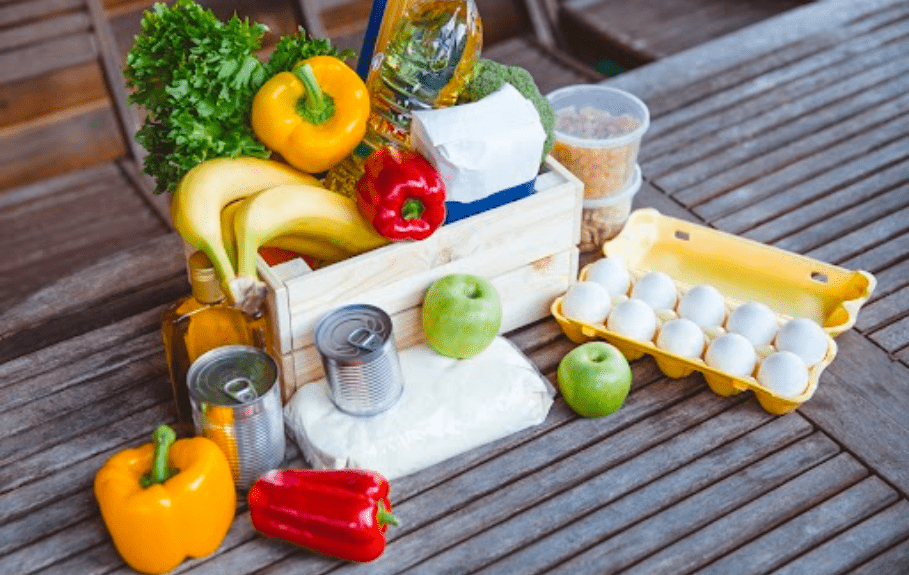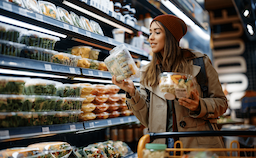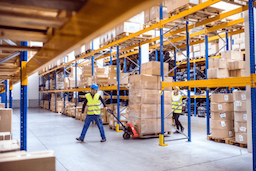February 15, 2022
The Complete Package – How Grocers Will Keep Pace with Online Consumer Shift

The Indian online grocery delivery sector competition has ramped up massively over the last three months. Since e-commerce grocery retailers have upped their commitments to customers on the delivery time, a tidal wave change is underway in the online grocery shopping experience. It can put a lot of demand on the speed and sustainability of product packaging. Post pandemic, there has been a sizable shift in the audience ordering grocery online, with some reports indicating a change in more than 25% from offline to online. The number is only set to grow further.
The Indian online grocery market will grow at a CAGR of 36% to reach approximately $38 billion by 2028. While safety and food quality should always take precedence, secondary packaging options can address most of the delivery needs of grocers. In response, packaging may demand a sizable upfront investment to Grocers, but over time, it will encourage customers to make repeat purchases and gradually shape consumer loyalty.
Here is what will drive the packaging ecosystem for Grocers, aggregators, and consumers:
Aggregators role for grocers: As more consumers shift to online grocery shopping, grocers will have to cater to bulk packaging supplies across categories. Packaging aggregators will play a crucial role by providing a convenient one-stop-shop solution for all types of packaging required by grocers. Furthermore, the balanced offering of quality packaging products/materials at an optimized cost with exceptional customer service will become essential.
At Moglix, we have strong pillars to deliver on our customers’ commitment to ensuring millions of Indians have access to fresh goods when desired. Firstly, a dedicated NPD team works closely with customers to simplify packaging demands and bring down complexity across various food categories. This helps save development time and material costs and enables a more sustainable footprint for each ecosystem link.
Aggregators need to also position themselves as the source of innovation and capitalize on new trends in packaging. A few examples of these trends are:
- Replacing bubble wrap with packing peanuts made out of corn or honeycomb structure
- Use of high strength to weight ratio fabric with minimum weight to insulate material in saddlebags
- Engineered corrugated cases as per the supply chain requirement
Trends and Advancements in Grocery Packaging: What’s New?
Extending the Shelf-Life of Edibles
Trends and advancements regarding perishable food items are also critical – e.g., There is a rising acceptance that the salt used for preserving meat items needs to be avoided for health issues and replaced with natural ingredients. Instead, lactate solutions have a bacteriostatic effect on meat and extend shelf life by 50-100%.
Sustainability and Compliance
Grocers have been using food-grade polymers, but there is a widespread shift towards sustainability with time. Materials have to be compliant with government regulatory norms, like the minimum microns rating will be increased from 50 to 125 from July 2022.
Material Use
From a material point of view, grocers need to familiarize themselves with PCR grade packaging material (PCR PET & PCR PE) for poly bags compostable polymer grades like PLA and starch-based films.
Last-Mile Delivery and Distribution
As the penetration of delivery services increases, grocers can take advantage of integrated aggregators like Moglix, which offers an unprecedented distribution footprint (35k pin codes), a unified supplier base that brings tremendous savings due to economies of scale.
Technology Integration in the Supply Chain
Technology or platform-oriented aggregators offer higher visibility and control on inventory, reduce wastage through Just In Time delivery, and improve customer service benchmarks. This allows grocers to integrate technology suppliers, category expertise, logistics, and warehousing in a single supply chain ecosystem.
With their packaging needs well taken care of, grocers can focus on reducing inventory wastage and engage with their customers for a more significant business impact.



